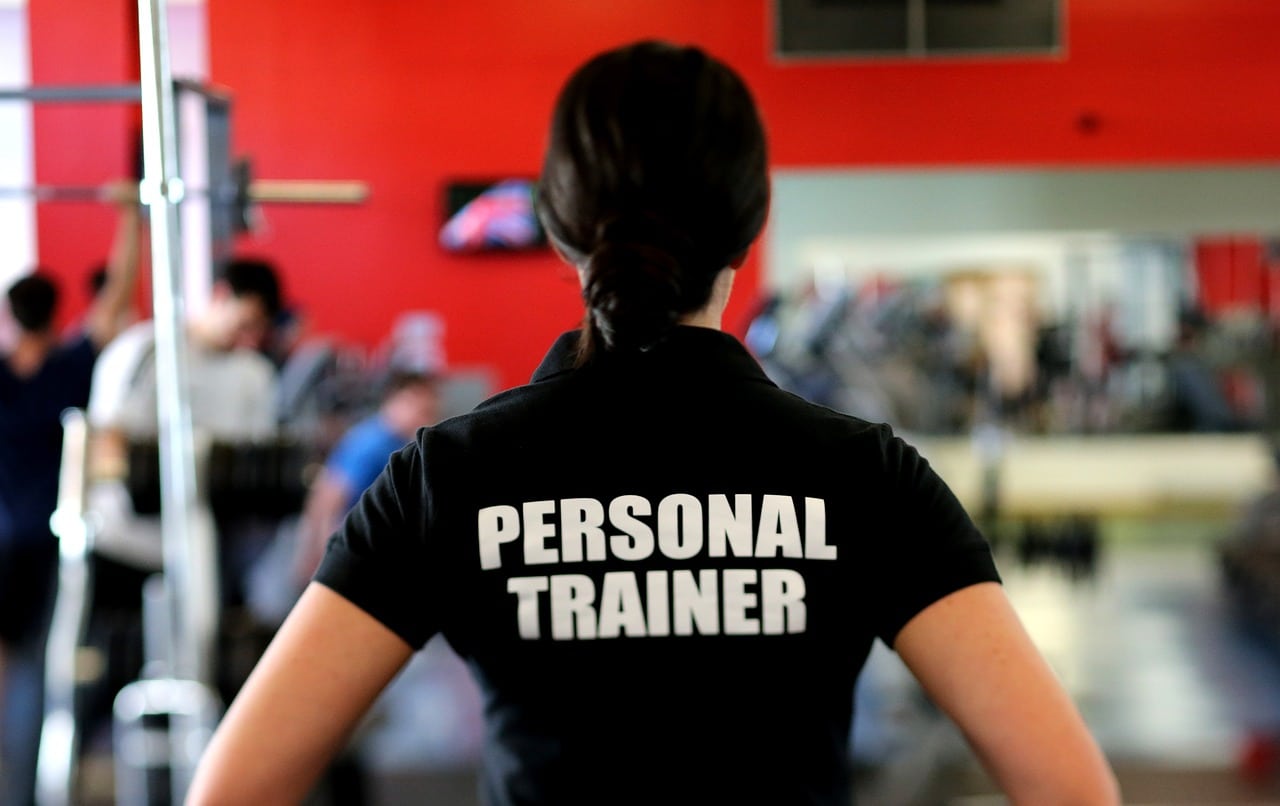Individual experiences of chronic pain vary significantly. They can range from distracting or mildly annoying to completely debilitating. Chronic pain is a complex ailment that is often, but not always, a symptom of another condition. Those who live with chronic pain often find that it affects several aspects of their health and well-being.
Chronic pain can be debilitating in many ways:
- Physically, chronic pain often doesn’t waver. It can range from discomfort to debilitating pain.
- Psychologically, chronic pain can take center stage in a person’s life. It can get in the way of processing emotions and experiences, and it can lead to depression and anxiety. Additionally, if the sensation of chronic pain is not improved despite seeking healthcare, it can cause a sense of defeatedness, frustration, and hopelessness.
- Socially, the combination of the physical and psychological effects of chronic pain can create roadblocks to engage in healthy social relationships.
- Financially, chronic pain management is often burdensome, especially if a person’s condition is not covered or only partially covered by insurance.
The central goal of chronic pain management is to improve a person’s quality of life. In many cases, chronic pain doesn’t disappear completely, but pain can be reduced to a manageable level.
Holistic health coaches can have an important role in supporting clients who are experiencing chronic pain. While there is no single holistic solution to chronic pain, holistic health approaches offer a variety of tools that can help people manage the pain. This article provides an introduction to the science of pain, and it summarizes and reviews some of the most common holistic approaches to pain management.
Pain 101
While pain is unpleasant, the sensation plays a vital role in protecting our health by alerting us of damaging stimuli.
The basic pain mechanism in the body undergoes three events:
- Transduction: The pain-causing stimulus is converted to a chemical tissue event, and chemicals are translated as electrical impulses in nerve cells, then translated again as chemical events in the synapses (the connection between one neuron and another).
- Transmission: The information about the pain-causing stimulus is transmitted electrically across the pathways.
- Transduction: The pain message is transmitted to the higher brain center, allowing us to feel the pain sensation and triggering a response.
In chronic pain, however, pain processes are varied and complex. They vary depending on the origin of the pain, the feedback mechanism, and the particular mechanism in each individual person. In general, researchers agree that in chronic pain, the central nervous system plays a key role in the persistence of the pain. For this reason, traditional pharmacological treatment, as well as alternative therapies for chronic pain, focus on chemical agents that modulate the central nervous system’s functioning.
Different Types of Pain
There are two main types of pain: acute and chronic. There are then different subtypes of pain that can be useful to determine the cause of the pain as well as to identify treatments.
- Acute pain: Acute pain means that the pain is of short duration. Acute pain may last from minutes to several months. It is usually related to an injury or temporary illness, and it may evolve into chronic pain.
- Chronic pain: Chronic pain lasts several months or years. It is often due to a health condition that signals the pain pathways. There are several different types of chronic pain:
- Intermittent or constant: Intermittent pain comes and goes, while constant pain continues without significant interruption.
- Regional or widespread: Regional chronic pain stays within a particular area of the body, while widespread pain can affect the whole body or multiple regions of the body.
- Neuropathic pain: Neuropathic pain results from damage to the nerves or other parts of the nervous system. It is described as shooting, stabbing, or even burning pain.
- Nociceptive pain: This pain results from damage to body tissue. It is often described as sharp, achy, or throbbing. It can be acute or chronic.
- Radicular pain: This type of pain occurs when the spinal nerve is compressed or inflamed, and it may be felt as a tingling numbness or weakness. Sometimes it is called sciatica.
The types of pain are not mutually exclusive. A person can feel several types of chronic pain at the same time.
Causes of Chronic Pain
Chronic pain causes the pain signals to stay active for months and years. Some causes of chronic pain include:
- An injury that had peripheral damage or was not treated effectively in time
- A serious infection
- Arthritis
- Cancer
- Autoimmune disease
- Chronic fatigue syndrome
- Endometriosis
- Fibromyalgia
- Temporomandibular joint dysfunction
- Vulvodynia
- Inflammatory bowel disease
- Interstitial cystitis
- Undiagnosed condition
Some people experience chronic pain without any evidence of past injury or any history of conditions associated with chronic pain. Scientists do not know if conditions that cause chronic pain share a common cause or related process.
Some common chronic pain complaints include:
- Headache or migraine
- Low back pain
- Cancer-related pain
- Arthritis pain
- Joint pain
- Neurogenic pain
- Psychogenic pain (not due to any injury, disease, or detectable sign of damage)

Get Your Free Guide
Learn How to Start a Fulfilling, Impactful Career as a Holistic Health Coach
You’ll learn:
- Why holistic health matters
- If holistic health coaching is right for you
- What career opportunities exist for health coaches
- And more!
Holistic Approach to Chronic Pain Management
There are several ways that holistic health coaches can support clients in managing pain. Depending on their particular approach and ability to communicate with the client’s primary healthcare team, holistic health coaches can support clients to varying degrees regarding overall wellness, nutrition and diet, physical activity, and complementary alternative therapy.
Supporting Overall Wellness
As a holistic health coach, you have a wider view of wellness, beyond the physical dimension of health, than most physicians.
The holistic view of health takes center stage when working with clients to address complex health issues.
Some of the dimensions of wellness you will want to consider include physical, emotional, occupational, social, intellectual, and spiritual.
Below, we suggest ways in which chronic pain may affect different dimensions of wellness, and we suggest ways you may be of support to your clients, addressing the root causes of pain by way of a holistic view of wellness.
- Chronic Pain and Physical Wellness
Many approaches to chronic pain, which is primarily a physical sensation, prioritize physical wellness. Holistic approaches to pain management address chronic pain relief and management without drugs or together with prescribed drugs. Common holistic strategies for pain management include nutrition, exercise, and alternative therapy. These are described in later sections.
- Chronic Pain and Emotional Wellness
For most people, physical conditions and illnesses will affect their emotional wellness. In addition to a greater risk of developing anxiety and depression, many people who have been experiencing chronic pain for extended periods of time are victims of medical gaslighting. If medical teams cannot find what is causing the pain or if their patients aren’t responding to pain treatment, they may suggest or imply that the patient’s pain is psychosomatic or even made up.
- Chronic Pain and Occupational Wellness
Occupational wellness refers to a sense of fulfillment when contributing your gifts, talents, knowledge, and experience to the community and the world. Chronic pain can prevent you from feeling you are able to carry out your occupation to its full capacity. Even when people have a desire to work or carry out their talents, their chronic pain can feel like a mental and physical roadblock to doing so.
- Chronic Pain and Interpersonal and Social Wellness
Chronic pain can affect people’s relationships with those around them. Difficulty moving comfortably, frequent or constant focus on pain, brain fog, and mood can make people want to be alone or stay at home; this can keep them away from those they care about. When the person affected by chronic pain doesn’t want to or doesn’t know how to share what they are feeling and how it is affecting them, it can cause rifts in relationships.
Additionally, friends, families, and co-workers may not show empathy toward the person experiencing chronic pain, further creating rifts in relationships.
- Chronic Pain and Intellectual Wellness
Chronic pain can affect an individual’s intellectual wellness in many ways. Chronic pain can take up a significant proportion of a person’s thoughts and feelings, which can leave them with minimal energy and motivation to learn and retain new things.
Additionally, chronic pain is clinically proven to cause brain fog and fatigue. This presents a significant challenge in the ability or willingness to take on intellectual projects.
Finally, the financial burden of people living with chronic pain can be significant, especially if the cause of chronic pain has not yet been identified. Since most formal educational paths in the US require significant financial investment, people living with chronic pain may be at a disadvantage if they have to pay for medical bills out of pocket.
- Chronic Pain and Spiritual Wellness
Spirituality has a nuanced but undeniable connection to chronic pain in many populations. Spirituality and religiosity can provide tools to people to actively cope with their chronic pain. While there is limited research that documents and examines the relationship between chronic pain and spiritual wellness, some research shows improved health outcomes in people with chronic pain who find solace in spiritual or religious belief systems.
It is important to note, however, that some individuals and populations may experience a break in their spiritual wellness when coping with chronic pain.
Diet and Nutrition
There are a wide variety of nutritional and dietary strategies designed to help relieve chronic pain. These can vary depending on the cause of the chronic pain and the individual’s biology.
A review of research on the role of nutrition in pain management can be summarized as follows:
- Meeting nutrient requirements (macronutrients and micronutrients) as well as consuming an abundance of foods with flavonoids and other antioxidants is essential for health in people with chronic pain, as well as for those who aren’t living with chronic pain.
- Ultra-processed foods are energy-dense but poor in micronutrients; when a significant portion of dietary energy comes from ultra-processed foods, there is a greater risk of micronutrient deficiency
- An anti-inflammatory diet can reduce the prevalence of many chronic diseases associated with pain, including diabetes, cardiovascular disease, and obesity.
- Nutrient supplements may have a role in pain management; nutrient supplements often have a slower effect than drugs but are not necessarily ineffective.
A systematic review and meta-analysis examined the effectiveness of various nutrition interventions for people with chronic pain. The research found that:
- Interventions that aimed to move individuals toward a more healthful eating pattern rich in plant-based foods had a positive effect on their pain score.
- Altering intakes of specific nutrients, such as fat, protein, or fiber, had mixed results.
- Only about a quarter of studies that focused on specific supplements had specific results, but amino acids (collagen, carnitine, and theramine) were the supplements that had the most statistically significant results for musculoskeletal pain.
- Fasting therapy did not result in statistically significant reductions in pain and may only produce short-term results, but it can negatively affect nutritional status and overall health in the long term.
Even then, researchers and institutions that develop the guidelines and theories clearly state that there is a need for additional human nutrition studies to understand and document the effect of specific nutrients and dietary patterns on pain perception and pathophysiology.
As a holistic health coach, you may make general suggestions for how diet and nutrition may impact your client’s condition. To do this, we recommend identifying research and guidelines based on the specific cause or type of chronic pain your client is experiencing. Remember that there is no one-size-fits-all eating pattern, whether a person is experiencing chronic pain or not.
Physical Activity
Physical activity is widely recommended to people living with chronic pain. A review of Cochrane systematic reviews found that there is plenty of evidence to point toward this recommendation. The review found the following results:
- Pain severity: Most reviews showed that physical activity resulted in a reduction in pain severity, but there was inconsistency in self-reported pain scores.
- Physical function: There is a small to moderate effect of physical activity on physical function.
- Psychological function and quality of life: There were variable results of this measure, though most results were either moderately favorable or showed no effect.
Thus, the research shows that physical activity may benefit people experiencing chronic pain but should not generally be considered a stand-alone strategy for chronic pain management.
Health coaches must consider the barriers to participation in physical activity of people living with chronic pain. People experiencing chronic pain (widespread or regional) tend to participate less in moderate-to-vigorous physical activity. Research demonstrates that some of the barriers to physical activity for people experiencing chronic pain include:
- Challenges specific to staying active while living with chronic pain: decreased activity levels, discomfort during physical activity, and uncertain and fluctuating abilities
- Diverse factors that influence participation in physical activity: pain, fatigue, perceived risks, beliefs about physical activity, competing demands, social support, motivation, other health conditions, and access to support for physical activity or exercise
- Perceived outcomes: pain management, functional improvements, social participation, mental health, and overall well-being (i.e., the degree to which people living with chronic pain perceive that physical activity will be beneficial in reducing pain)
Thus, despite the perceived and research-backed benefits of physical activity for people living with chronic pain, there are diverse factors that influence individual participation. As a holistic health coach, it is important to work with your client to identify and reduce modifiable barriers to physical activity. This can be done utilizing trauma-informed motivational interviewing techniques.
Complementary and Alternative Therapy
Complementary and alternative therapies, sometimes also referred to as complementary and alternative medicine, are treatments that fall outside of mainstream medical care and practices. Some examples include supplements and botanicals, manipulative and body-based practices such as massage, biofield therapy such as Reiki, and whole medical systems such as Ayurvedic or Traditional Chinese Medicine.
The focus of integrative medicine is combining alternative therapies and conventional biomedical practices for treatment. As a holistic health coach, you may consider working with integrative medical doctors to support clients along their chronic pain management journey.
Researchers have focused on the role that several alternative therapies may have in pain management. This can be particularly useful if your clients feel more comfortable with alternative therapies than biomedical therapies for cultural, personal, or experiential reasons or if conventional treatments have been unsuccessful in helping your clients manage chronic pain.
Below is a summary of the research behind the role of common alternative therapies in helping people with chronic pain:
- Mindfulness interventions: Mindfulness and acceptance interventions, such as acceptance and commitment therapy (ACT), mindfulness-based stress reduction (MBSR), and mindfulness-based cognitive therapy (MBCT), have been used to help manage the effect of chronic pain on mental and physical health. In general, they are not superior to cognitive-behavioral treatments, but they can be good alternatives.
- Energy medicine: Includes pulsed electromagnetic fields, therapeutic touch, Reiki, qigong, and Cranial Electrotherapy Stimulation. Except for Reiki, which has limited support in its use for chronic pain, energy medicine has possible positive impacts on chronic pain management, with most research pointing to its effects on osteoarthritis and spine pain.
- Hypnosis: There is relatively strong evidence that indicates the moderate effectiveness of hypnotic analgesia treatments on chronic pain.
- Yoga: Research shows that yoga is probably effective for lower back pain management, and it may be effective for pain stemming from carpal tunnel and osteoarthritis.
- Biofeedback: Effectiveness varies depending on the cause of the pain. There is relatively strong evidence that suggests its effectiveness for acute pain, and it is probably effective for pain related to posture and stress.
- Chiropractic: Spinal manipulation through chiropractic had beneficial effects in multiple studies, but there is a lack of quality studies to determine the degree of the effects.
- Massage therapy: There is strong evidence that shows the beneficial effect of massage therapy on lower back pain, and evidence points to a moderate positive impact on shoulder pain.
- Homeopathy: There is weak evidence to demonstrate that homeopathic interventions result in a decrease in pain.
- Acupuncture: It effectively treats dental, chemotherapy-related, and chronic low back pain. There is limited evidence to show its efficacy for other pain conditions.
As a health coach, unless you are specialized in one or several of these areas of complementary or alternative therapy and have legal permission to practice, if you think your client could benefit from any one of these therapies, it is important to refer them to a specialist.
Main Takeaways
Chronic pain has the potential to significantly impact a person’s health and wellness. It can have implications for all dimensions of a person’s wellness. At the same time, chronic pain treatment and management are complex. As a holistic health coach, you can support your clients in identifying realistic lifestyle options that may benefit them, including diet and nutrition, exercise, and alternative medicine.
These management options often go hand-in-hand with conventional medicine. With your client’s permission, speak to them about how a holistic health approach may support them in managing their pain, reducing barriers to engaging in pain management practices, and opening an opportunity so that, once again, they can lead a lifestyle where pain doesn’t take center stage.

Get Your Free Guide
Learn How to Start a Fulfilling, Impactful Career as a Holistic Health Coach
You’ll learn:
- Why holistic health matters
- If holistic health coaching is right for you
- What career opportunities exist for health coaches
- And more!



